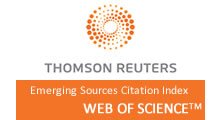Using Data Mining Techniques Examination of the Middle School Students’ Attitude towards Mathematics in the Context of Some Variables
927
456
Abstract
The aim of this study is to examine middle school students’ attitude towards mathematics in the context of their mathematic learning preferences using data mining which is data analysis methodology that has been successfully used in different areas including educational domains. ‘How do I actually learn?’ questionnaire and attitude scale were applied to 702 middle school students studying in three different cities of Turkey. Demographic data (gender, grade level, parents’ education level, pre-school education) were also gathered. Data mining techniques such as decision tree was implemented. Furthermore web graph was used for visualization of relationship between mathematic learning preference and attitude towards mathematics. Constructed decision tree models with C5.0 algorithm revealed that all of variables used in this study are related to the attitude towards mathematics but the most effective attribute is found as grade level. Using web graph, it was found that the strongest relationship was between reflective learning preference and positive level attitude towards mathematics.
Full Text:
PDFRefbacks
- There are currently no refbacks.
Copyright (c) 2017 International Journal of Education in Mathematics, Science and Technology







International Journal of Education in Mathematics, Science and Technology (IJEMST)

This work is licensed under a Creative Commons Attribution-NonCommercial-ShareAlike 4.0 International License.
ISSN: 2147-611X (Online)
